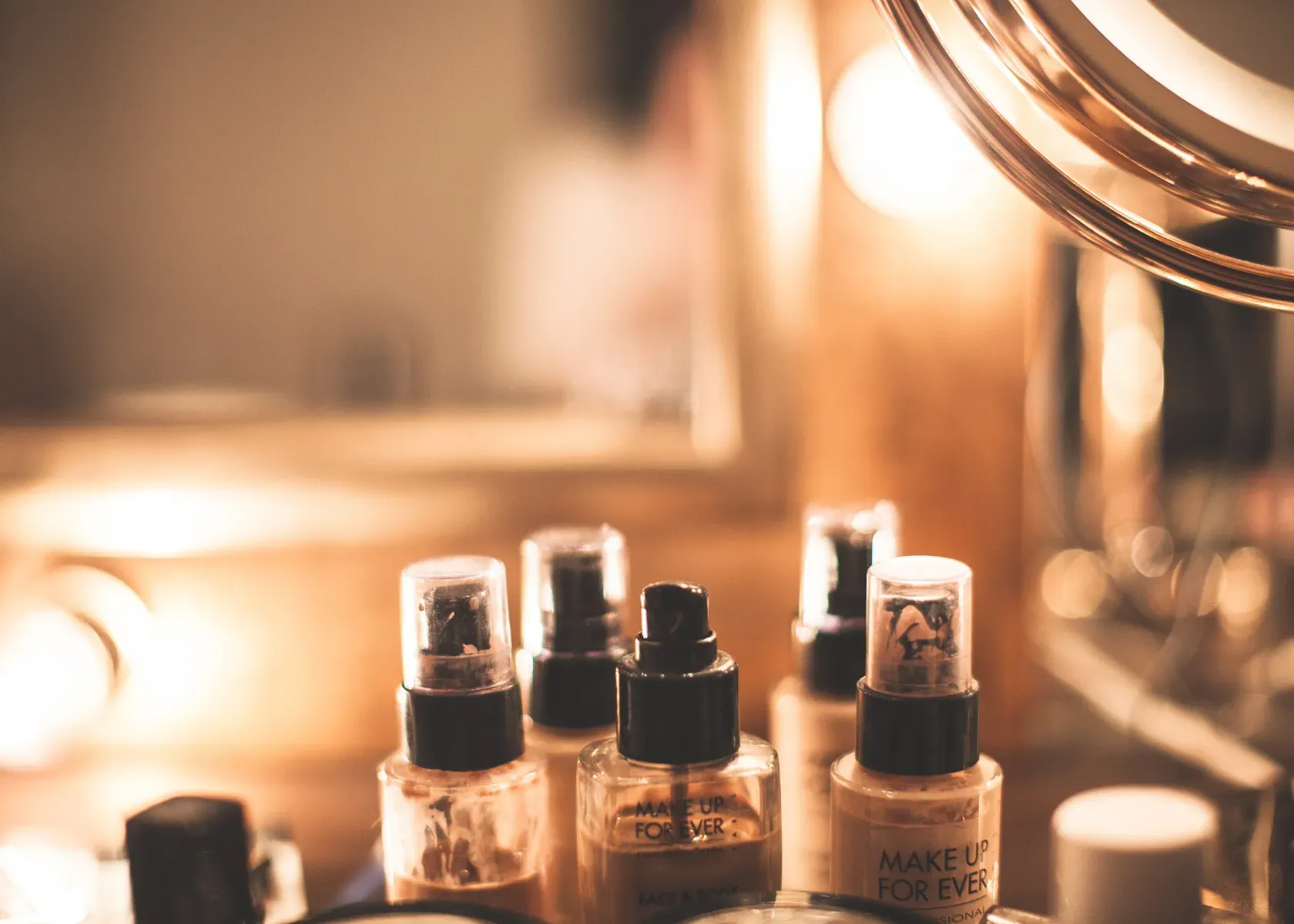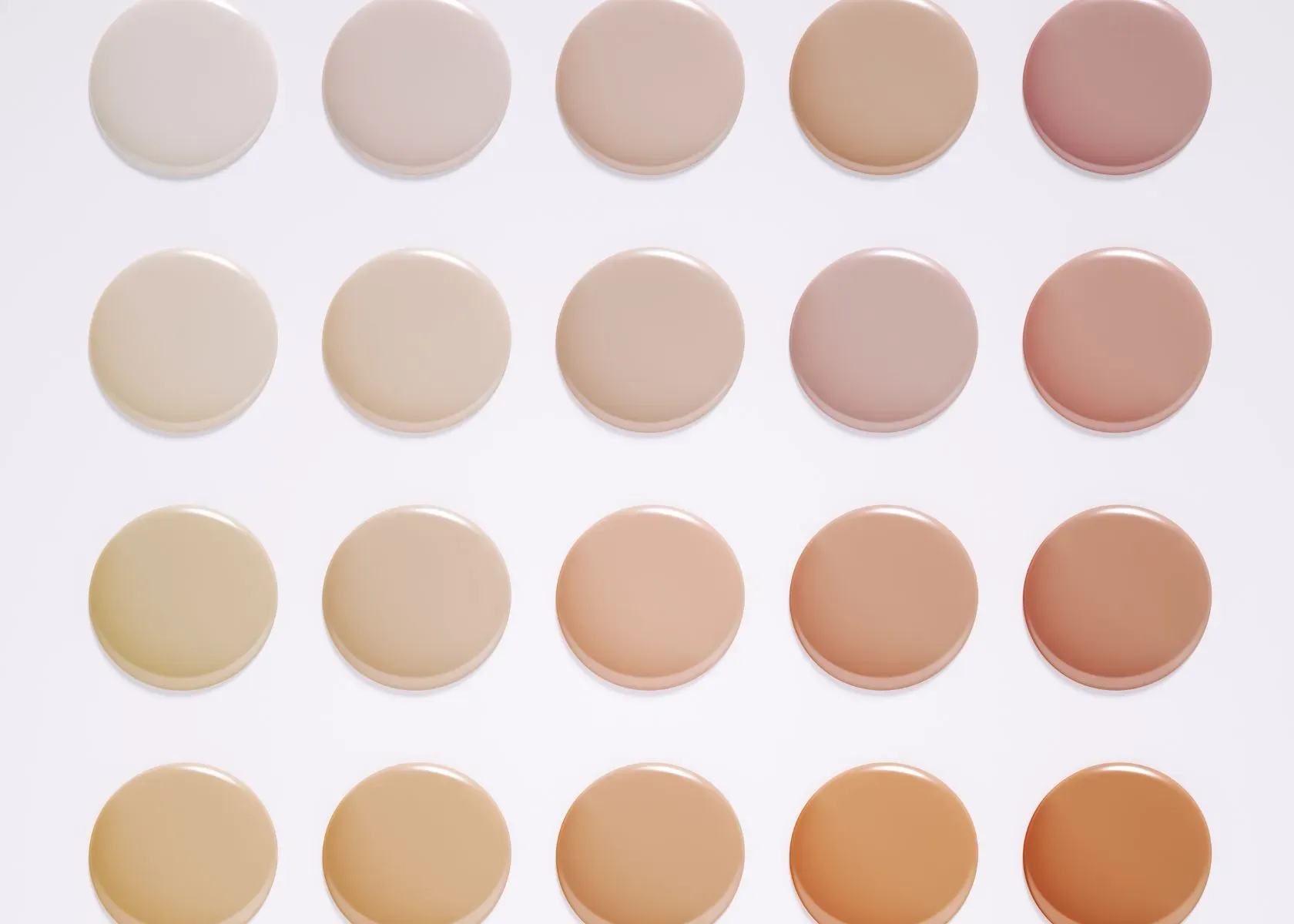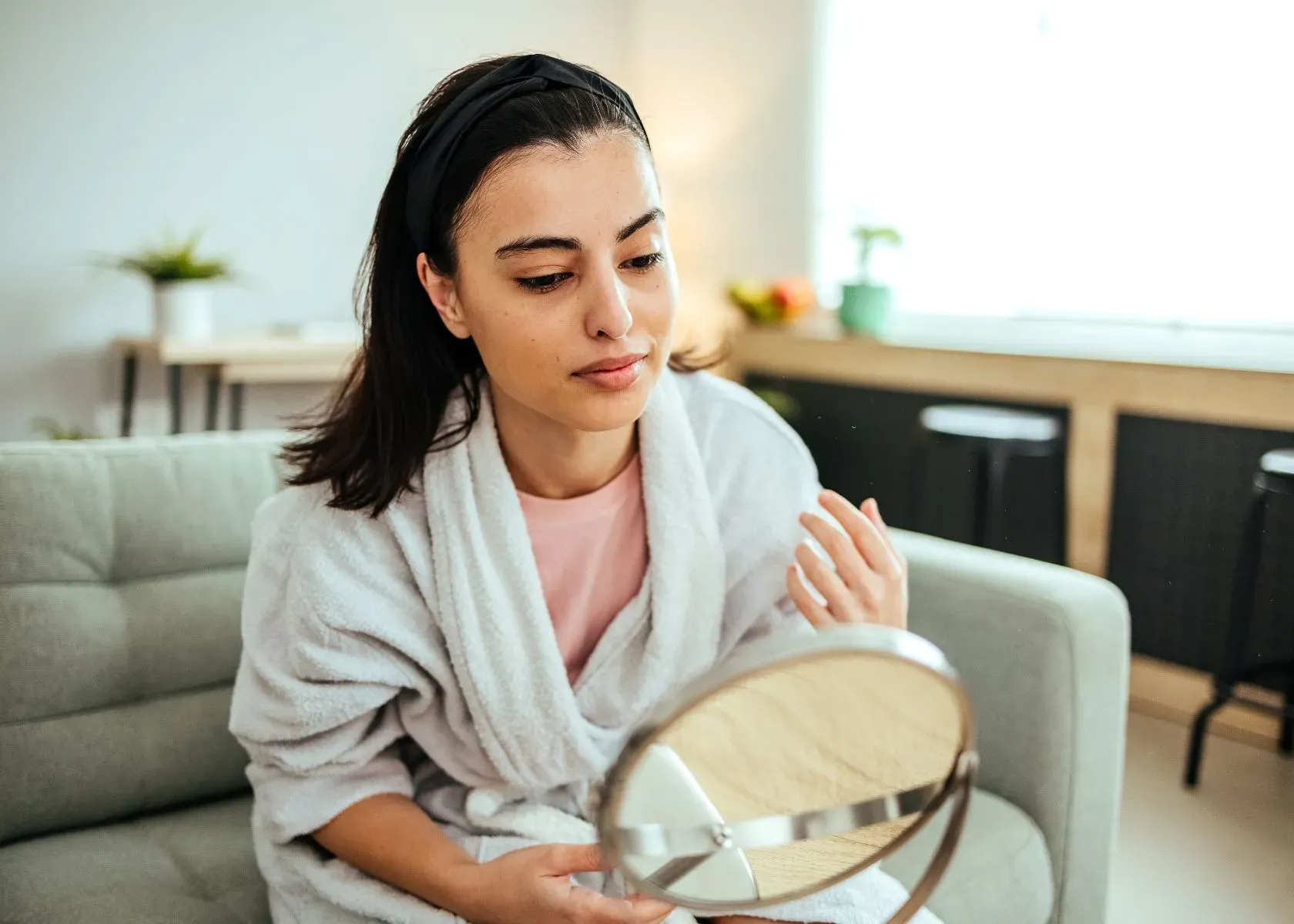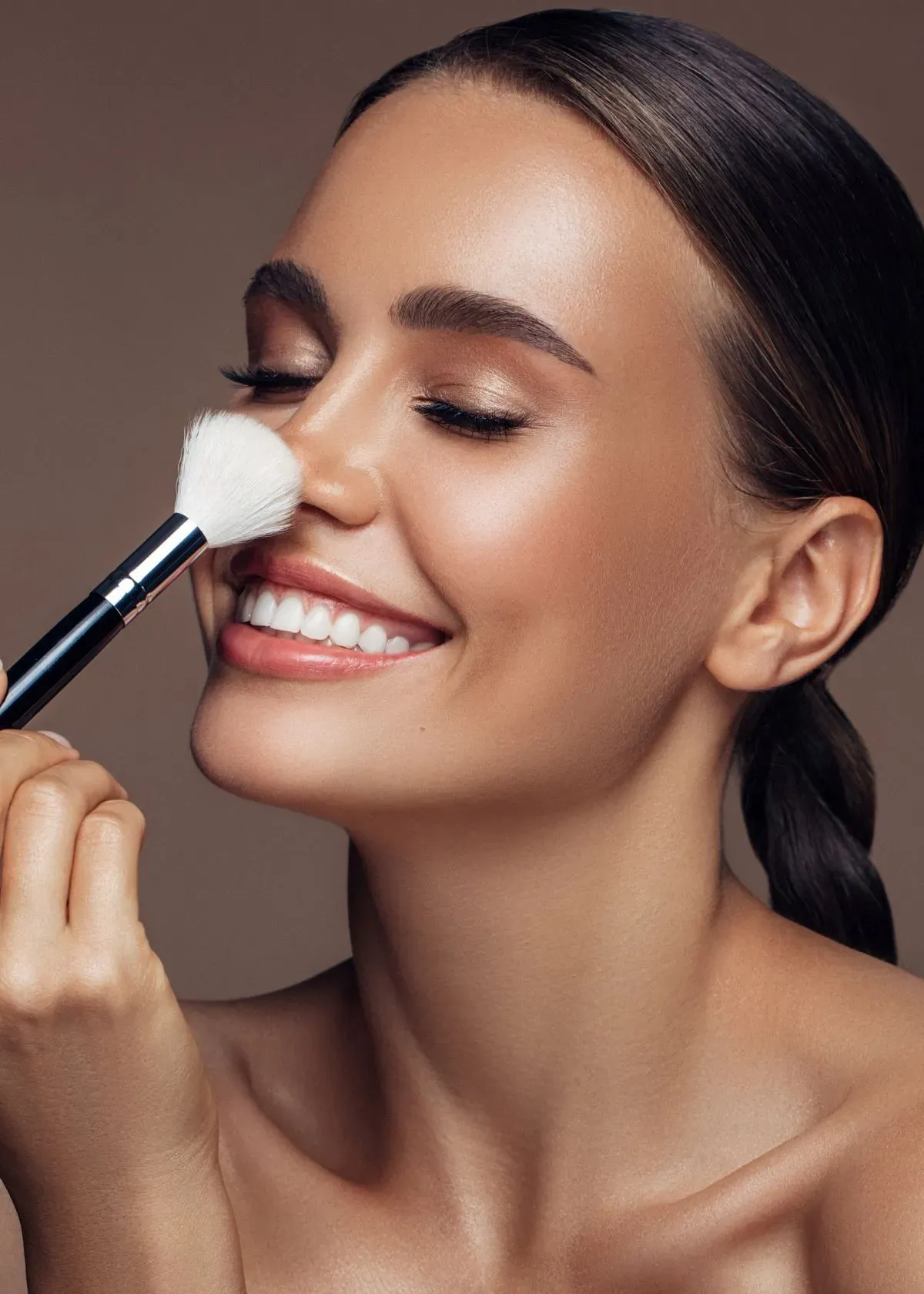Hello, my friends! Venturing into the realm of makeup can feel as bewildering as navigating a labyrinth; with abundant products and methods, it's easy to wonder where one should begin.
Perhaps you're eyeing that fresh-off-the-shelf bottle of foundation, half expecting some enchanting magic to achieve that seamless blend on your skin. I can relate—gazing into the mirror with aspirations for that picture-perfect finish.
Fear not! Having wandered down the beauty aisle more times than I'd care to count, and after myriad experiments (accompanied by a fair share of blunders), I've gathered quite a trove of tips for mastering foundation use.
Do you know how pivotal lighting is when selecting just the right hue? This nugget of knowledge was one of many game-changers in my makeup journey.
So come along on this blog adventure—we will investigate everything from pinpointing your perfect match to accomplishing sublime application.
Are you geared up for those lightbulb moments? Let’s unveil the secrets behind perfecting your foundation routine!
Key Takeaways
- Start with clean, moisturized skin and use a primer to prepare for foundation, ensuring a smoother and longer-lasting application.
- Choose the right type of foundation based on your skin's needs and makeup routine — liquid for a natural finish, powder for oily skin, cream for dry or mature skin, and stick for convenient touch-ups.
- Use tools like makeup blenders or makeup brushes to apply foundation evenly; dab instead of rub to blend it seamlessly into the skin.
- Select the correct shade by testing in natural light; consider your undertone (warm, cool, neutral) when choosing a match.
- Set foundation with powder or spray to maintain coverage all day; blend down past the jawline onto the neck and ears for a cohesive look.
Types of Foundation for Beginners

When it comes to everyday makeup foundation, beginners have a few options. There’s a liquid foundation for a natural finish, a powder foundation for easier application, a cream foundation for buildable coverage, and a stick foundation for convenience.
Let's dive into each type and determine the best one for you!
Liquid Foundation
Liquid foundation is a go-to for many beginners due to its versatility and ease of use. I find that it's an excellent choice for achieving a natural, flawless look because you can build up coverage from sheer to full.
I ensure my skin is clean and moisturized for best results before application. A primer helps smooth any fine lines or pores, creating the perfect canvas.
Applying liquid foundation is pretty straightforward. I prefer using a makeup sponge or brush as it blends the product seamlessly into my skin.
It’s crucial to match the shade precisely – store lighting can be deceptive! Always test shades along your jawline in natural light for an accurate match.
No one wants their face to look disconnected from their neck because of mismatched colors!
I blend down past my jawline and onto my neck slightly for a coherent appearance without harsh lines or color discrepancies - consistency is key here! And while applying, remember less is more: start with small amounts and add layers as needed.
Avoid heavy-handedness since this can lead to chaos, which nobody wants. This way, I maintain control over the final finish, whether aiming for matte perfection or just evening out my complexion lightly.
Powder Foundation
Powder foundation is a great option for beginners as it's easy to apply and offers buildable coverage. It is ideal for oily or combination skin types, absorbing excess daily oil.
When selecting a powder foundation, consider your skin type and shade match for a seamless blend with your natural tone. Applying powder foundation can be done using a brush or sponge, allowing you to customize the level of coverage according to your preference.
One key advantage of powder foundation is its versatility – it can be used on its own for a natural look or layered over liquid foundation for added coverage. Additionally, it sets quickly and provides a matte finish, making it an excellent choice for those who prefer minimal touch-ups throughout the day.
Cream Foundation
Cream foundation is a great option for beginners as it provides excellent coverage and is easy to blend. Due to its moisturizing properties, it works well for all skin types, especially dry or mature skin.
Cream foundation also offers buildable coverage, allowing you to achieve the desired opacity level without feeling heavy on the skin. When choosing a cream foundation, consider your skin type and the finish you prefer, whether dewy or matte.
Additionally, remember that using a makeup blender or brush can help ensure smooth and even application.
Setting your cream foundation with a translucent powder can help increase its longevity and prevent shine throughout the day. Don't forget that shade matching is crucial when selecting a cream foundation – natural daylight is ideal for finding your perfect match.
Stick Foundation
Stick foundation is a convenient option for beginners because of its ease of use and portability. It comes in a stick form, making it easy to apply directly to the skin, and can be blended with fingertips or a makeup brush.
This foundation often provides buildable coverage, allowing you to layer it for more concealment. Additionally, the stick foundation is great for touch-ups on the go and is suitable for all skin types, providing a natural finish without feeling heavy.
Consider your skin type and desired coverage level when choosing a stick foundation. Look for words like "hydrating," "matte," or "illuminating" on the label to match your specific needs.
How to Choose the Right Foundation

When choosing the right foundation, consider your shade and undertone, the finish you want, and the coverage you need. Read on to learn more about finding the perfect foundation for your skin as suggest by expert makeup artist.
Shade and Undertone
Before buying foundation, it's crucial to consider your skin's undertone. Undertones can be warm, cool, or neutral. Look at the veins on your wrist - if they appear blue or purple, you likely have a cool undertone.
If they look greenish, you might have a warm undertone. If you can't determine either color clearly, then your undertone is probably neutral.
Understanding your skin's undertone helps you select the right shade of foundation that complements and enhances your natural complexion.
When choosing a foundation shade, always test it in natural light to ensure an accurate match.
Remember that foundations often oxidize or darken after application, so opt for a shade slightly lighter than your skin tone if unsure.
Finish
After ensuring that the foundation is blended seamlessly, setting your foundation for a flawless finish is essential. A setting powder or spray can help keep your foundation in place throughout the day.
Pay attention to avoid creating a harsh line at the jawline, and don't forget to blend down towards your neck and ears to achieve a natural, polished look. Setting your foundation ensures it stays intact, providing a long-lasting and perfect makeup base.
To get an even more seamless finish, consider using a damp makeup sponge lightly dusted with loose powder or setting spray all over the face. This simple step will help lock in your makeup and guarantee it lasts all day without budging.
Coverage
Foundation coverage refers to how well the product evens out your skin tones and conceals imperfections. It can range from sheer, providing a natural look, to full coverage, which offers more opacity for blemishes and discoloration.
The level of coverage you choose depends on your preferences and the condition of your skin or dark circles. Keep in mind that different foundations offer different levels of coverage, so it's essential to select the one that best suits your needs.
When considering foundation coverage, remember that shade matching and finish also play crucial roles in achieving a flawless makeup base.
Preparing Your Skin for Foundation

Before applying foundation, it's important to cleanse and moisturize your skin to create a smooth canvas. Using a primer will also help to ensure that your foundation goes on evenly and stays in place throughout the day.
Cleanse and moisturize
Before applying foundation, starting with clean and moisturized skin is crucial. Cleansing your face removes dirt, oil, and impurities, creating a smooth canvas for your foundation.
Follow up with a lightweight moisturizer to hydrate the skin and create an even base for makeup application. Skipping this step can lead to patchy or uneven foundation coverage.
I cannot stress enough how important it is to have clean and moisturized skin before moving on to the next steps in our beginner's guide to flawless foundation application.
Use a primer
Before applying foundation, I use a primer to create a smooth and even base for my makeup. Primers help to fill in fine lines and pores, as well as provide a velvety surface for the foundation to adhere to.
This ensures that my foundation stays put throughout the day and helps control excess oil, giving me a flawless finish. Prepping with primer is essential for achieving a long-lasting and polished look.
Tips for Applying Foundation

Always use a makeup blender or brush to apply foundation to achieve a flawless application. Remember to dab the product onto your skin instead of rubbing it in and blending it to your neck and ears for a seamless finish.
Use a makeup blender or brush
To apply foundation, I use a makeup blender or brush. I gently dab the product onto my skin, ensuring even coverage. If I want a more airbrushed finish, I use a makeup blender to blend the foundation seamlessly into my skin.
When using a makeup or concealer brush, I choose one with soft and densely packed bristles for smooth application.
Choosing between a makeup blender or brush depends on preference and the desired finish. Both tools allow for precise application and achieve natural-looking results when used correctly.
Dab, don't rub
After applying foundation with a makeup blender or brush, it's important to remember to dab the product onto your skin rather than rubbing it in. This gentle dabbing motion helps to blend the foundation seamlessly without disturbing other products underneath or creating streaks on your skin.
Dabbing also allows you to gradually build coverage, ensuring you achieve a natural and even finish without overloading your skin with the product.
When you're finished applying your foundation, gently press a setting powder into the skin using the same dabbing motion for long-lasting wear.
As mentioned earlier, continue to use the dabbing technique when blending down to your neck and ears. This helps create a seamless transition between your face and neck, avoiding any noticeable lines where the foundation stops.
Blend down to the neck and ears
Blend the foundation seamlessly down to your neck and ears for a natural, even look. This ensures no visible lines or boundaries between your face and neck, creating a flawless finish.
Remember, the goal is to achieve a cohesive blend from your face to your neckline for a perfectly polished appearance that matches your skin tone.
Setting Your Foundation for a Flawless Finish

After applying your foundation, setting it for a flawless finish is essential. Using a setting powder or spray can help keep your foundation in place and prevent it from creasing or fading throughout the day.
Don't forget to blend to your neck and ears for a seamless look - and conceal your dark undereye circles!
Use a setting powder or spray
To set your foundation, apply a setting powder or spray to keep your makeup in place throughout the day. This step helps control shine and minimizes the need for touch-ups. Gently dust translucent powder over your face with a fluffy brush, focusing on areas that tend to get oily, like the T-zone.
If you prefer a dewy finish, use a setting spray instead of powder for a natural-looking glow.
Setting your foundation with either powder or spray helps enhance the longevity of your makeup and ensures it stays put during long days or special occasions. Plus, it creates a seamless look and provides extra protection against smudging and fading.
Avoid a harsh line at the jawline
Blend the foundation down your neck to blend it with your skin tone. This creates a natural transition and prevents any visible lines at the jawline.
Apply minimal product around the jaw area and use gentle downward strokes of foundation brush for a soft, diffused finish.
Use a clean makeup blender or brush to buff out any harsh edges and ensure no stark contrasts between your face and neck. Pay attention to blending along the jawline, ensuring an even application without creating an abrupt difference in color or texture.
The goal is to achieve a seamless look that appears as if you're not wearing makeup while ensuring consistency between your face and neck tones. Remember, subtle blending can make a big difference in achieving a flawless foundation application.
Don't forget the ears!
Blocking it down to the neck and ears is crucial when applying foundation. This ensures a seamless transition between your face and neck, avoiding noticeable lines. I always make sure to gently blend foundation onto my ears as well for an even and natural look.
Also, blending foundation onto the ears prevents a mismatched appearance, especially if you're wearing your hair up or have short hair. It completes the overall coverage, giving a polished finish that looks cohesive from every angle.
Frequently Asked Questions - Foundation Tips for Beginners

For the best foundation application, choose the best beauty blender or foundation brush and start with a few dots. Apply a light layer on the entire face and read these FAQs for more tips.
What are the basics of applying foundation for beginners?
Beginner's guide to foundation starts with choosing the right shade and then using simple application techniques, such as dabbing and blending, to create a smooth finish.
How do I prepare my skin before applying makeup foundation?
A solid skincare routine is key before applying cosmetics, including cleansing, exfoliating to remove dead skin cells and moisturizing your dry skin to ensure a flawless base for your matte or glossy foundation.
Can you give me some tips on contouring when using foundation?
Sure! Contouring shapes your face by highlighting high points and shadowing under the cheekbones; it's done after applying your base layer of makeup foundation.
What type of beauty products do I need as a beginner in makeup?
Start with essential beauty products: skincare items, a quality beginner-friendly makeup tutorial, and basic cosmetics, including matte or liquid foundations matching your skin tone.
Are there step-by-step guides available for newbies learning about makeup application?
Yes! Look up 'step-by-step foundation guide for beginners' online or check out tutorials that offer instructions on proper beauty tips and techniques for laying down foundation makeup.
Conclusion
To achieve a flawless foundation application, it's crucial to prep your skin with primer for a smooth base - this holds for both oily and matte foundation. Clean, hydrated skin ensures an even and seamless foundation finish.
Lighting is key when selecting the right foundation shade. Blending your foundation down to your neck helps avoid a harsh line between your face and neck.
Identifying your foundation shade is essential for a perfect match that complements your natural skin tone. If you have any suggestions that we might have missed out, share in the comments section below.
References
- Lan, C. (2016, October 17). 17 foundation tips every beginner needs to know. BuzzFeed. https://www.buzzfeed.com/christinalan/foundation-tips-for-beginners-thatll-make-your-face-glow
- Paris, L. (2023, July 14). foundation-101. L’Oréal Paris. https://www.lorealparisusa.com/beauty-magazine/makeup/face-makeup/foundation-101
Learn More About Other Related Topics of Makeup Foundations





